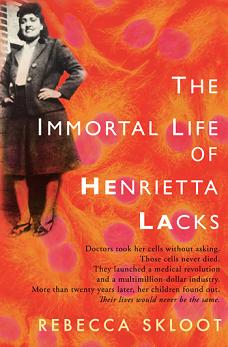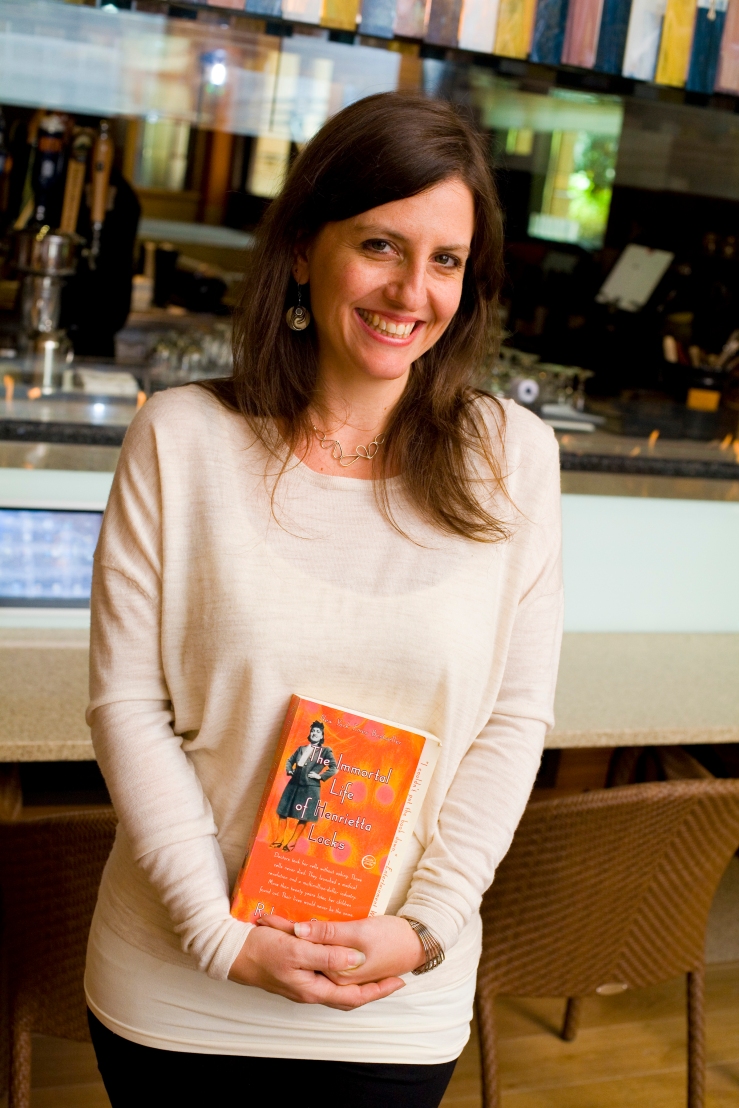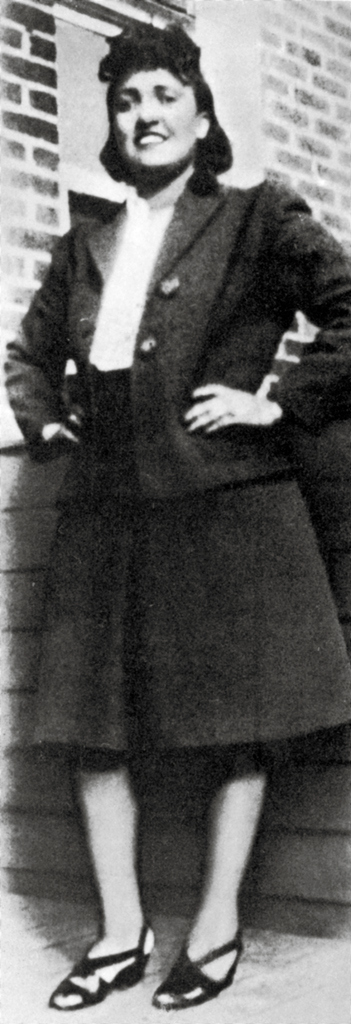For my Course Culminating task, I have decided to read the novel The Immortal Life of Henrietta Lacks. What really drew me in about this novel was the subject matter. For my readers who know me well, you are aware that I have a keen interest in medicine and am an advocate for racial equality. As these are the main components of the novel, I knew that I would enjoy reading Rebecca Skloot’s book. Have any of you read The Immortal Life of Henrietta Lacks? I would definitely recommend this book as a summer read because I cannot put it down. I’m halfway through the novel and it is shaping up to be a real page turner.

Thus far, I have noticed a lot of reoccurring symbolism and archetypal characters emerging. If you haven’t read the novel, I will give you a brief overview without any spoilers (you’re welcome). Rebecca Skloot, the author and narrator of the novel, is extremely interested in the woman behind the famous HeLa cells. These cells came from Henrietta Lacks and were used in countless medical endeavors, like the polio vaccine, without her willing consent. Henrietta passed away before her “immortal” cells reformed cell culture as we know it. Her family was never informed of her cells’ vitality until decades after their widespread use in medical research. This impoverished African American family was shocked that they had been left in the dark for so long while the medical community made millions of dollars in profit from Henrietta’s cells (Skloot 1-7). This true story baffled me because of the strides the medical community has made since the 1950’s.

If I’ve peaked your interest, read along for my analysis of half of this novel using an Archetypal perspective.
What initially peaked my interest was the author’s first person narration of the novel. This writing gives the novel a personal feel and it is almost as though Skloot is speaking directly to you. According to Carl Golden’s definition of the major literary archetypes, Skloot is both a Hero and a Sage within the novel (Golden). Throughout the novel, Skloot fearlessly and tenaciously pursues her objective: to tell Henrietta’s story. After her professor’s brief introduction of the woman behind the HeLa legacy, Skloot decided to “…write a book that was a biography of both the cells and the woman they came from – someone’s daughter, wife and, mother” (Skloot 6). Prior to this novel, minimal information was available about Lacks. This is the very reason why Skloot made it her personal mission to give this woman and her family the recognition they deserved.

As the hero, Skloot embarks on a journey to uncover the truth behind the HeLa cells. She was faced with many questions and obstacles along the way but courageously overcame them all. For years, Skloot attempted to get an interview with Henrietta’s family. She even resorted to calling the Lacks family, on a daily basis, but was met with rejection time and time again (Skloot 54). Skloot ultimately embarks on her hero’s journey as she leaves the comfort of her home and travels across the country for answers (Skloot 67). During her journey, Skloot must “overcome fear and commit to change” in order to accomplish her goal of writing the novel (Vogler). Her incredible drive is a result of her underlying “self-type” of being a Sage (Golden). Skloot’s desire for uncovering the truth behind the HeLa cells and belief that “there has to be more to the story” is what makes her such a devoted and unique author (Golden) (Skloot 4).

The second archetypal character I recognized was Dr. George Gey. Dr. Gey was a prominent scientist within the field of cell culture because he received the original HeLa cells from Henrietta’s biopsy (Skloot 33). More than anything, Gey desired to gain the fame and publicity of growing “the first immortal human cells” thus confirming that Gey’s archetype is the Ruler (Skloot 41) (Golden). As a Ruler, Gey’s main goal is to be successful within the scientific community. With a focus on prestige, Gey is regularly interviewed about his groundbreaking successes within cell culture (Skloot 57). Immediately after the HeLa cells immortality is confirmed, Gey ships the cells around the world for mass production and global experimentation (Skloot 56). He fits the mold of Rulers who are “high achievers with a long list of accomplishments to their name” (Smith).

As Gey is willing to take Henrietta’s cells, without her willing consent, I also perceive him as the Villain. Without him, Henrietta’s cells would have died along with her and her family would not have been subjected to years of harassment by the press (Skloot 55). Despite all the benefits the HeLa cells ultimately had for the medical community, it was unethical for Gey to harvest them and make a profit from Henrietta’s genetic property as “…her family had no idea her cells were alive” (Skloot 109).

Speaking of Henrietta’s cells, I believe that they are a motif within the novel. By their very definition, “cells are the basic building blocks of all living things… Cells also contain the body’s hereditary material and can make copies of themselves” (What is a Cell?). The cancerous cells removed from Henrietta’s cervix were her genetic property. When Gey took the malignant cells from her biopsy, Gey stole what was rightfully Henrietta’s (Skloot 33). These cells not only represent HeLa’s legacy and immortality within the medical field but they also represent Henrietta herself.
Cells are responsible for containing “…all the genetic information that makes you you” (Skloot 3).

The HeLa cells are a portion of Henrietta that lives on to this day but they should have died with her because she was not informed of their distribution. Not only were her cells robbed from her but Henrietta’s life was robbed by the inaptitude of the medical community itself. To put it into perspective for my readers, Henrietta was treated with Radium, a life-threatening element, and was denied proper treatment because of her race (Skloot 32). Henrietta lives on through her cells and we will forever be indebted to her because of the great injustice she faced.

Two other symbols that Skloot includes within the novel are “Lacks town” and Clover, in addition to the famous photograph of Henrietta. Henrietta grew up, impoverished, within a segregated community, “…the upper plot-now known as Lacks Town-went to the black Lackses” (Skloot 123). Not only were the Lackses separated from society because of their race but they were even barred from living amongst their Caucasian relatives (Skloot 125). The deteriorated areas of “Lacks Town” and Clover represent the segregation of African Americans due to the racial discrimination they faced.

The photograph of Henrietta is another key symbol I discovered. Skloot recalls:
I’ve spent years staring at that photo, wondering what kind of life she led, what happened to her children, and what she’d think about cells from her cervix living on forever-bought, sold, packaged, and shipped by the trillions to laboratories around the world (Skloot 1-2).

This photograph is tied to Henrietta’s identity and ultimately represents her humanity because it gives a face to the woman behind the cells. For years, Henrietta was misidentified or neglected altogether but this photograph acts as evidence of her mortality (Skloot 109). Without this photograph, Henrietta would remain an abbreviation and her story may have never been told.
Skloot’s use of roles, symbolism and motifs aids the reader’s connection to and comprehension of the text. They are extremely important for the reader to identify with the characters and to become invested within Henrietta’s life story.
Do you agree with my analysis? Please comment below and let me know. As always, this Girl with an Opinion wants to hear your opinion!
Until my next post,
Emily Kacer
Works Cited
Golden, Carl. “The 12 Common Archetypes.” Soul Craft. N.p., n.d. Web. 12 July 2017.
Skloot, Rebecca. “About The Immortal Life of Henrietta Lacks.” Rebecca Skloot. N.p., n.d.
Web. 12 July 2017.
Skloot, Rebecca. The Immortal Life of Henrietta Lacks. New York: Penguin Random
House, 2010. Print.
Smith, Nyla. “Brand Archetype: The Ruler.” N-Vision Designs. N.p., 24 May 2016. Web. 12
July 2017.
Vogler, Christopher. “Hero’s Journey.” The Writer’s Journey. N.p., n.d. Web. 12 July 2017.
“What is a Cell? – Genetics Home Reference.” U.S. National Library of Medicine. National
Institutes of Health, n.d. Web. 12 July 2017.